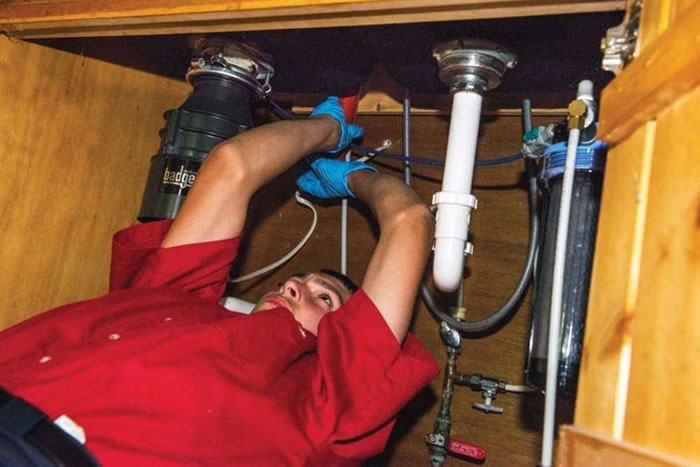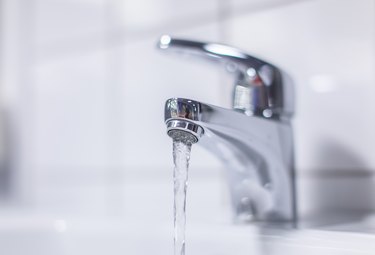Your Comprehensive Advice to Managing Low Water Pressure in Your Home
Your Comprehensive Advice to Managing Low Water Pressure in Your Home
Blog Article
We have discovered the article pertaining to Dealing with Low Water Pressure in Your Home directly below on the net and felt it made good sense to relate it with you in this article.

Low tide stress in your home can be an aggravating trouble, affecting every little thing from bathing to cleaning dishes. If you're experiencing weak water flow, there are several possible causes and options to explore. In this guide, we'll review common reasons for low tide pressure and sensible actions to deal with the problem properly.
Intro to Low Water Stress
Low tide stress occurs when the circulation of water from your taps, showers, and other fixtures is weaker than typical. This can make everyday jobs a lot more challenging and less efficient. Comprehending the root causes of low tide pressure is vital to finding the ideal remedy.
Usual Root Causes Of Low Tide Stress
Pipeline Obstructions
Gradually, pipes can end up being blocked with mineral deposits, debris, or particles, restricting the flow of water. This is a typical problem in older homes with galvanized steel pipelines.
Deterioration
Corrosion within pipelines can lead to leaks and lowered water pressure. Rust buildup can restrict water flow, especially in maturing plumbing systems.
Faulty Pressure Regulatory Authorities
Pressure regulatory authorities are accountable for maintaining consistent water pressure in your home. If they malfunction, it can result in low tide pressure or irregular flow throughout your house.
Community Water System Issues
In some cases, the problem exists outside your home. Metropolitan supply of water problems, such as main line leakages or maintenance work, can briefly decrease water pressure in your area.
Just How to Identify Low Water Pressure
Inspecting Faucets and Components
Beginning by examining the water stress at different taps and fixtures throughout your home. If the problem is separated to specific areas, it may suggest local issues.
Evaluating Pipes
Examine visible pipes for signs of leakages, rust, or clogs. Take note of any kind of unusual sounds, such as knocking or rattling pipelines, which can show issues within the plumbing system.
Consulting with a Plumber
If you're not able to identify the cause of low water pressure, consider working with an expert plumber to perform a comprehensive assessment. They can recognize underlying issues and suggest appropriate remedies.
DIY Solutions to Deal With Low Water Pressure
Cleaning Aerators and Showerheads
Natural resources can collect in aerators and showerheads, decreasing water circulation. Remove and clean up these parts consistently to improve water pressure.
Flushing Hot Water Heater
Sediment accumulation in the water heater can restrict flow and minimize performance. Purging the storage tank regularly assists remove debris and keep optimum performance.
Inspecting Stress Regulator
Ensure that the pressure regulator is operating properly. Readjusting or changing the regulatory authority can help recover appropriate water pressure throughout your home.
Cleaning Clogs in Pipes
For minor clogs, try making use of a plumbing serpent or chemical drainpipe cleaner to clear obstructions in pipelines. Be cautious when utilizing chemicals and adhere to security guidelines.
When to Call an Expert Plumber
If do it yourself efforts fail to deal with the concern or if you believe significant plumbing issues, it's best to seek help from an accredited plumber. They have the know-how and devices to deal with complicated issues safely and effectively.
Preventive Measures to Preserve Water Pressure
Regular Upkeep
Set up regular maintenance for your plumbing system to prevent concerns such as deterioration, leaks, and blockages. Addressing small issues early can assist prevent more significant fixings in the future.
Mounting a Pressure Booster
Think about installing a stress booster pump to improve water pressure in areas with constantly low flow. This can be specifically beneficial for multi-story homes or residential properties with high-demand fixtures.
Surveillance Water Use
Bear in mind water use practices and stay clear of ill-using the plumbing system. Easy changes, such as shocking showers and laundry lots, can aid preserve sufficient water pressure.
Conclusion
Taking care of low tide stress can be frustrating, however recognizing the underlying causes and carrying out appropriate options can bring back optimum circulation throughout your home. Whether it's cleaning aerators, evaluating pipelines, or speaking with a plumber, taking aggressive steps can ensure a steady supply of water for your daily demands.
FOUR WAYS TO FIX LOW WATER PRESSURE NOW
Turning on a shower or faucet only to find the water comes out in a sad, slow drizzle is never a good feeling. How exactly are you supposed to wash a pan or take a quick shower when it takes 10 minutes just to rinse off a little soap? The good news is that when your water pressure is bad, there's always a cause: typically one that can be easily fixed. Here are some of the most common causes of low pressure and what you can do to fix the issue:
DEBRIS AND MINERAL DEPOSIT BUILDUPS
If you notice low water pressure from just one or two of the fixtures in your house, the problem likely has to do with debris buildup. Water is full of minerals and other debris, all of which can accumulate in your pipes and on your fixtures. This can cause a blockage that affects how much water flows through. To fix this, try filling a small plastic bag with white vinegar, and use a rubber band to hang it around your showerhead or faucet. Let the head of the fixture soak for a few hours, and the vinegar should loosen the deposits.
WATER LEAKS
Leaks are another common cause of low water pressure. If water is flowing out of your plumbing through a hole or crack before it can reach your fixture, the pressure coming out of the faucet or showerhead will be lower. A plumbing professional is your best bet for finding and repairing a leak in your water supply pipes.
Leaks are another common cause of low water pressure. If water is flowing out of your plumbing through a hole or crack before it can reach your fixture, the pressure coming out of the faucet or showerhead will be lower. A plumbing professional is your best bet for finding and repairing a leak in your water supply pipes.
FOUR WAYS TO FIX LOW WATER PRESSURE NOW
Turning on a shower or faucet only to find the water comes out in a sad, slow drizzle is never a good feeling. How exactly are you supposed to wash a pan or take a quick shower when it takes 10 minutes just to rinse off a little soap? The good news is that when your water pressure is bad, there's always a cause: typically one that can be easily fixed. Here are some of the most common causes of low pressure and what you can do to fix the issue:
DEBRIS AND MINERAL DEPOSIT BUILDUPS
If you notice low water pressure from just one or two of the fixtures in your house, the problem likely has to do with debris buildup. Water is full of minerals and other debris, all of which can accumulate in your pipes and on your fixtures. This can cause a blockage that affects how much water flows through. To fix this, try filling a small plastic bag with white vinegar, and use a rubber band to hang it around your showerhead or faucet. Let the head of the fixture soak for a few hours, and the vinegar should loosen the deposits.
WATER LEAKS
Leaks are another common cause of low water pressure. If water is flowing out of your plumbing through a hole or crack before it can reach your fixture, the pressure coming out of the faucet or showerhead will be lower. A plumbing professional is your best bet for finding and repairing a leak in your water supply pipes.
Leaks are another common cause of low water pressure. If water is flowing out of your plumbing through a hole or crack before it can reach your fixture, the pressure coming out of the faucet or showerhead will be lower. A plumbing professional is your best bet for finding and repairing a leak in your water supply pipes.
A VALVE ISSUE
If you have low water pressure throughout your home, check your main shut-off valve to make sure it's completely open. You may also want to see if there's a pressure-reducing valve installed. If there is, have a plumber help you adjust the settings to get the pressure you're looking for.
OTHERS USING WATER
Believe it or not, your low water pressure could be caused by your neighbors. If you notice low pressure at certain times of day, it may be because you and the people living next to you have similar schedules - when everyone is showering at the same time, the pressure will be lower in every home. Low pressure throughout the neighborhood may also be caused by an issue with your municipal water supply. If that's the case, call the supplier to see if they're working on the issue.
https://www.rotorooter.com/blog/water-leaking/low-water-pressure-fixes/

Do you like more info about ? Place feedback down below. We would be glad to see your feelings about this post. In hopes to see you back again later on. In case you liked our blog post plz be sure to pass it around. Many thanks for your time. Revisit us soon.
Pricing Report this page